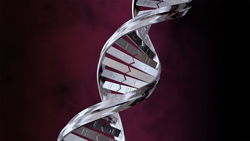Tagging DNA speeds up genome mapping
In order to meet the rapidly increasing demands for high-throughput genomic sequencing, partners of the FLYSNP project based at Uppsala University in Sweden have developed a new technique, the tag-array minisequencing system (TAMS). This is a combination of the highly specific minisequencing method and a microarray format that permits multiple samples to be analysed simultaneously. Genotype analysis is achieved using an ingenious method of tagging the single nucleotide polymorphisms (SNPs), sequences that vary by one nucleotide only. To achieve this, detection primers were designed to anneal directly upstream and adjacent to the polymorphic sequence under scrutiny. These primers are then extended with fluorescently labelled nucleotides that are complementary to the nucleotide at the SNP site. The tags then hybridise onto their corresponding cTag on the microarray thereby allowing genotyping of the SNP. This tag-array minisequencing technique is simple, low-cost and yet can analyse up to 200 SNP positions in 80 samples simultaneously. The reduced cost is due to the parallel analysis and the small reaction volumes required. To analyse the large amount of information produced, software developed by the bioinformatics group IMP/IMBA translates the data into the genotype and presents the output in user-friendly graph format. Dissemination of the technique and its applications in human genome research were a high priority for FLYSNP and the department of medical science, MEDSCI at Uppsala University. A practical approach included courses on TAMS offered both for visitors to the university and graduates. Globally, the comprehensive project website at http://flysnp.imp.ac.at/(opens in new window) provides full details of the TAMS technique together with links to the Drosophila genome databases FlyBase and DrosDel.







